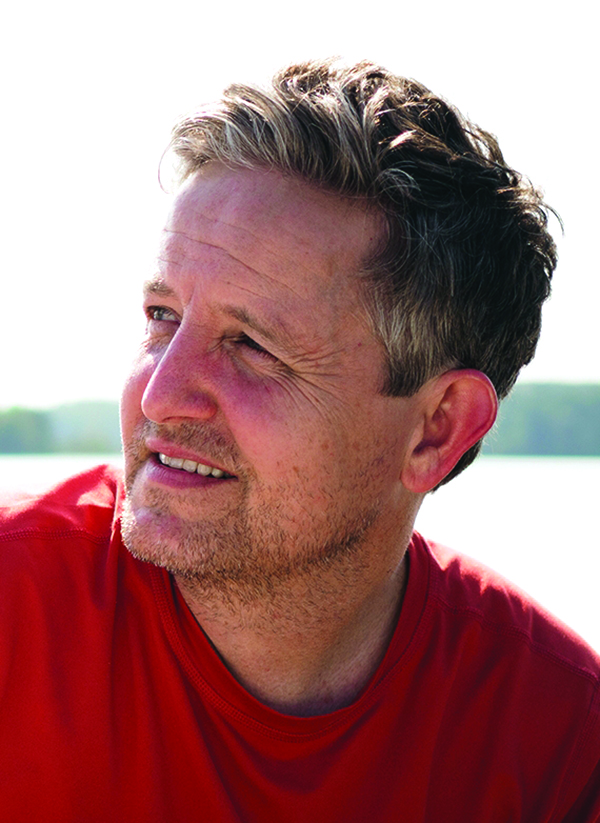I grew up thinking I was part Chickasaw Indian. A very small part, but a part nonetheless.
The story on my mother’s side of the family was that my great-grandmother — a wise woman with a gentle smile whose little home in Texas was the setting for several of my holiday memories growing up — was full-blooded Chickasaw.

Born in Pauls Valley, Oklahoma (the heart of Chickasaw Nation) in 1911, Effie Richardson Stearns was both my spiritual and, I thought, familial connection to Native Americans. This connection shaped my view as a kid — Indians were far more than the face-painted “savages” so stereotypically portrayed in the cartoons and movies I watched. I saw them as the good guys, even as a kid. Even when that wasn’t the point.
My great-grandmother died when I was 13. I was too young and too naive to really sit down with her to ask her about her childhood or her heritage. Thirty-three years later, as I wrote about the indigenous people of Noth Carolina and their history for this magazine, I decided to revisit my family’s Chickasaw claim, this time with the power of the internet at my disposal.
What I found isn’t so cut-and-dry as what I was told as a kid. The search was far more complicated and time-consuming than I had expected.
Yes, Effie Richardson was born in Pauls Valley in 1911, just four years after Oklahoma went from Indian Territory to a U.S. state. Census records show that Oklahoma more than doubled in population from 1900-1910 to 1.6 million people. Only 4.5 percent of the state’s people in 1910 — nearly 75,000 people — were listed as Native American. That number was 8 percent in 1900 and 25 percent in 1890.
I present this Census lesson to say that the vast majority of the families that moved to Oklahoma around the time my great-grandmother was born were from another state. And they were white.
I navigated a lot of branches on my family tree. I pored through Census cards, birth certificates and death certificates — all of which are surprisingly available on sites like ancestry.com (apologies for the advertisement). Under “race,” a capital “W” appeared next to my great-grandmother’s name, her parents’ names and her parents’ parents’ names.
Does this research officially kill the idea that I am a descendant of Native Americans? Unfortunately, for the most part, yes. Geneology sites like Ancestry factor in family histories from several sources, and in my family’s case, the sources were almost always in-step with each other. There were few variables.
Does learning that this storied part of my family’s history wasn’t necessarily the truth disappoint me? Yes, to some extent. I’d say many of us want to believe that we’re part of something bigger than us — something important. Learning the truth in no way changes the man I am today, but had I learned that I did, indeed, descend from the Chickasaw — the “Spartans of the Lower Mississippi Valley” — it would have certainly been a source of pride.
Not that I’m not proud. The wonderful thing about family trees is the branches go in many directions — and each of them tell a fascinating story. I followed the Liggett name on my dad’s side to the mid-1700s and Patrick Liggett, an Irish farmer in southern Pennsylvania who came to America as an indentured servant to pay for the boat ride. He was a pew-holder in his town’s Presbyterian church, and he served in the local militia as a private during the American Revolution.
Back on Effie’s side, her great grandfather was a man named Marmaduke Murphy, a Union soldier who died in a raid on a Confederate prison in Tennessee in 1864. Marmaduke’s daughter, Hannah Murphy, married a man named William B. Richardson (Effie’s grandfather) in 1856.
And this is where the branch gets interesting for me. William Richardson came from a long line of Richardsons from Moore County, North Carolina.
I may not have Native American blood, but I am distantly related to a lot of common names in this area -— Maness, Keller, Britt, Seawell, McNeill, Yow, Purvis and Wallace all appear in my family history. For a guy born in Ohio who grew up in Texas who only moved to North Carolina in the last 15 years, this was a pleasant surprise. To know some of these names played a role in Campbell University’s early history — well, that’s certainly something to be proud of.
As for my connection with the Native American people, I still have opportunities to share their stories and their histories in publications like this one. And I will still take the opportunity to learn more of their culture and their survivance. It doesn’t matter where I come from, it’s a history worth learning and sharing.
